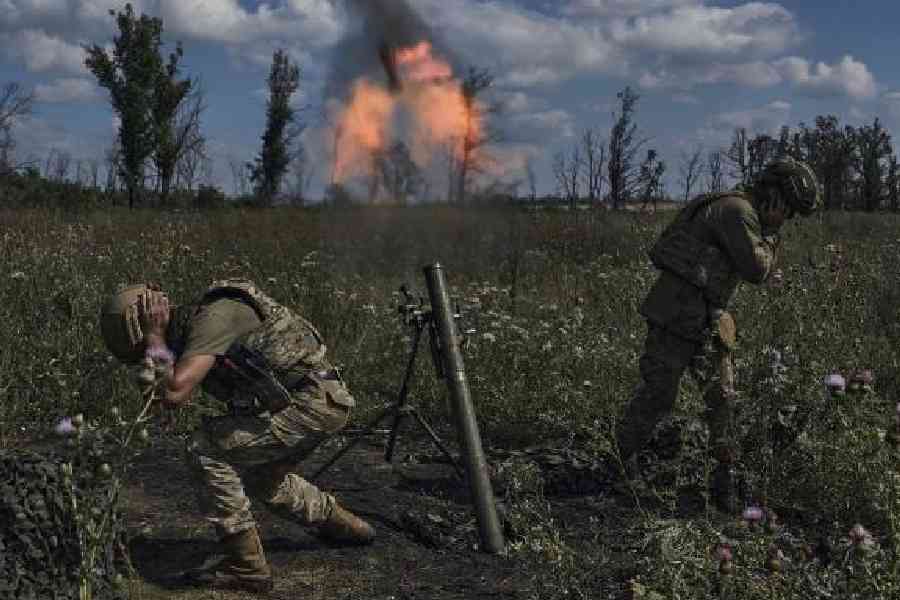May was a particularly deadly month for the Russian army in Ukraine, with an average of more than 1,000 of its soldiers injured or killed each day, according to US, British and other western intelligence agencies.
But despite its losses, Russia is recruiting 25,000 to 30,000 new soldiers a month — roughly as many as are exiting the battlefield, US officials said. That has allowed its army to keep sending wave after wave of troops at Ukrainian defences, hoping to overwhelm them and break through the trench lines.
It is a style of warfare that Russian soldiers have likened to being put into a meat grinder, with commanding officers seemingly oblivious to the fact that they are sending infantry soldiers to die.
At times, this approach has proved effective, bringing the Russian army victories in Avdiivka and Bakhmut in eastern Ukraine. But Ukrainian and western officials say the tactics were less successful this spring as Russia tried to take land near the city of Kharkiv.
American officials said that Russia achieved a critical objective of President Vladimir Putin, creating a buffer zone along the border to make it more difficult for the Ukrainians to strike into the country.
But the drive did not threaten Kharkiv and was ultimately stopped by Ukrainian defenses, according to western officials.
“President Putin and Moscow have really tried to make big gains, to break through the front lines this spring,” Jens Stoltenberg, the Nato secretary-general, said in an interview with The New York Times editorial board. “They tried and they failed. They made very small gains, and they are paying a very high price.”
Russian casualties have spiked at other times, especially during the assaults on Avdiivka and Bakhmut. But the assaults on those cities were spread out over several months. The push in May, both outside Kharkiv and along the eastern front, involved more intense periods of Russian wave attacks. British military intelligence analysts said Russia’s casualties in May, which they put at an average of 1,200 a day, were the highest of the war.
The fighting last month decimated the town of Vovchansk, about 64km from Kharkiv, where Ukrainian and Russian troops are engaged in a gruelling battle for control.
Russian soldiers have said on Telegram, the social media and messaging platform, that their units are suffering high casualties. Some say their ranks are being cut down by drones, machine-gun fire and artillery barrages.
Russia’s use of infantry in wave attacks reflects one of its advantages in the war: Its population is much larger than Ukraine’s, giving it a bigger pool of potential recruits.
But the casualties have forced Russia to ship new recruits to Ukraine relatively quickly, meaning that the soldiers sent to the front are poorly trained. The lack of structured training and the need to commit new recruits to combat operations have limited Russia’s ability to generate more capable units. It also increases casualties.
But it is more complicated than that. The changing nature of modern warfare has also increased the body count in recent months.
Ubiquitous drones have made it easy for both sides to spot and target enemy forces. And mines and cluster munitions make movement across open ground a nearly suicidal endeavour.
Since Putin launched a full-scale invasion in February 2022, at least 350,000 Russian troops have been killed or wounded, Defence secretary Lloyd Austin recently said. British estimates put the number of Russians killed or wounded at more than 500,000.
US estimates of casualties in the war are based on satellite imagery, communication intercepts, social media and news media dispatches from reporters, as well as official reporting from Russia and Ukraine. But such estimates vary, even within the US government.
Reliable estimates of Ukraine’s casualties are more difficult to come by. Ukrainian officials guard those numbers carefully. Several US officials insist they do not have an accurate account. President Volodymyr Zelensky of Ukraine has said that 31,000 Ukrainian soldiers were killed in the first two years of the war, but American officials say that number appears to understate Ukraine’s losses.
Russia conducted a partial mobilisation in September 2022, which led to tens of thousands of young men fleeing the country. But western intelligence analysts say Russia will not need to conduct another such mobilisation or draft this year.
Russia appears to be able to sustain its current campaign by offering financial incentives to recruits, drawing on convicts and bringing in some Russian mercenaries from Africa.
But the major question for this year will be whether Russia’s current strategy can best the Ukrainian military, which is finding its defensive footing. Arms and ammunition from a new $60 billion US aid package are finally reaching the front lines, and Ukrainian commanders are no longer having to ration rounds. Russia still outguns Ukraine, but not by as much.
New York Times News Service











